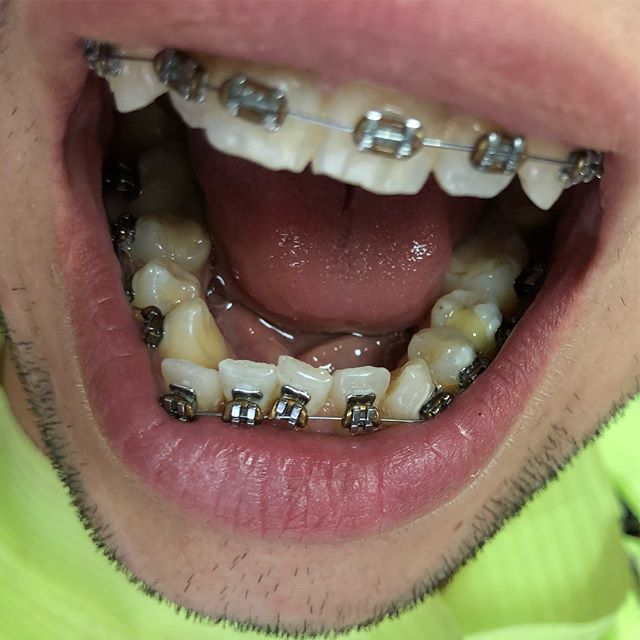Fake Braces Info: Risks And Benefits Explained

The world of dental cosmetics has experienced a significant surge in recent years, with various procedures and products emerging to cater to the increasing demand for aesthetically pleasing smiles. One such trend that has gained popularity, especially among young adults, is the use of fake braces. Also known as fashion braces or decorative braces, these orthodontic accessories are designed for individuals who want to achieve a unique, edgy look without actually needing orthodontic treatment. Despite their growing popularity, there are several factors to consider before opting for fake braces, including the potential risks and benefits associated with their use.
Introduction to Fake Braces
Fake braces are essentially decorative dental accessories that mimic the appearance of real orthodontic braces. They are typically made from metal or plastic and are designed to be attached to the teeth using various methods, such as adhesive or by being molded to fit around the teeth. Unlike genuine orthodontic braces, which are prescribed by dentists to correct dental issues such as misalignments, fake braces serve no therapeutic purpose. They are purely for cosmetic reasons, allowing wearers to embrace a specific aesthetic trend.
Risks Associated with Fake Braces
While fake braces may seem like a harmless way to express oneself, there are several risks associated with their use. One of the primary concerns is the potential for tooth damage. The adhesive used to secure fake braces to the teeth can be harmful, especially if not applied or removed correctly. This can lead to tooth decay, damage to the enamel, or even tooth loss in extreme cases. Moreover, the braces themselves can cause irritation to the gums and the surrounding soft tissue, leading to discomfort and possible infections.
Another significant risk is the obstruction of proper oral hygiene. Fake braces can trap plaque and bacteria between the teeth and the braces, making it difficult to maintain good oral hygiene. This can lead to a range of dental issues, from cavities to gum disease, if not addressed promptly. It’s also worth noting that the materials used in fake braces may not be as safe or durable as those used in genuine orthodontic appliances, potentially leading to allergic reactions or other adverse effects.
Benefits of Fake Braces
Despite the risks, there are some potential benefits associated with the use of fake braces, primarily related to their aesthetic appeal. For many, fake braces offer a unique way to express their personality or to follow a particular fashion trend. They can also provide a temporary solution for individuals who wish to experience the look of braces without committing to actual orthodontic treatment. Additionally, fake braces can serve as a form of self-expression, allowing wearers to stand out or feel part of a specific community that values this aesthetic.
Considerations Before Opting for Fake Braces
Given the potential risks and benefits, it’s crucial for individuals considering fake braces to weigh their options carefully. The first step should always be to consult with a dental professional. A dentist can provide valuable insights into the safety and feasibility of wearing fake braces, considering the individual’s oral health status. It’s also essential to research and understand the materials used in the fake braces and the method of application to minimize potential harm.
Moreover, individuals should be aware of the legal and regulatory aspects surrounding fake braces in their area. In some regions, the sale and use of fake braces may be subject to specific laws or guidelines, particularly concerning the materials used and the claims made about their safety and efficacy.
Conclusion
Fake braces represent a complex issue within the realm of dental cosmetics, blending elements of fashion, self-expression, and oral health. While they may offer a unique aesthetic appeal, the potential risks associated with their use cannot be overlooked. As with any cosmetic or dental procedure, informed decision-making is key. Individuals should approach fake braces with caution, seeking professional advice and considering the broader implications for their oral health and well-being.
What are the primary risks associated with wearing fake braces?
+The primary risks include tooth damage from the adhesive, irritation to the gums and soft tissue, and the potential for fake braces to obstruct proper oral hygiene, leading to dental issues such as cavities and gum disease.
Can fake braces be considered a form of self-expression?
+Yes, for many individuals, fake braces serve as a unique way to express their personality or to follow a particular fashion trend, allowing them to stand out or feel part of a specific community.
Is it necessary to consult a dentist before getting fake braces?
+Yes, consulting a dentist is highly recommended. They can provide insights into the safety and feasibility of wearing fake braces, considering the individual's current oral health status, and help mitigate potential risks.
In the realm of dental cosmetics, trends come and go, but the importance of prioritizing oral health remains constant. Whether considering fake braces for their aesthetic appeal or any other cosmetic dental procedure, individuals must approach these decisions with a thorough understanding of the potential outcomes and a commitment to maintaining their dental well-being. By doing so, they can navigate the complex landscape of dental cosmetics with confidence, ensuring that their choices align with both their desire for self-expression and their need for good oral health.
